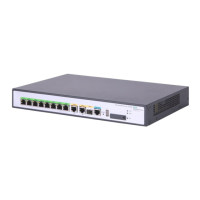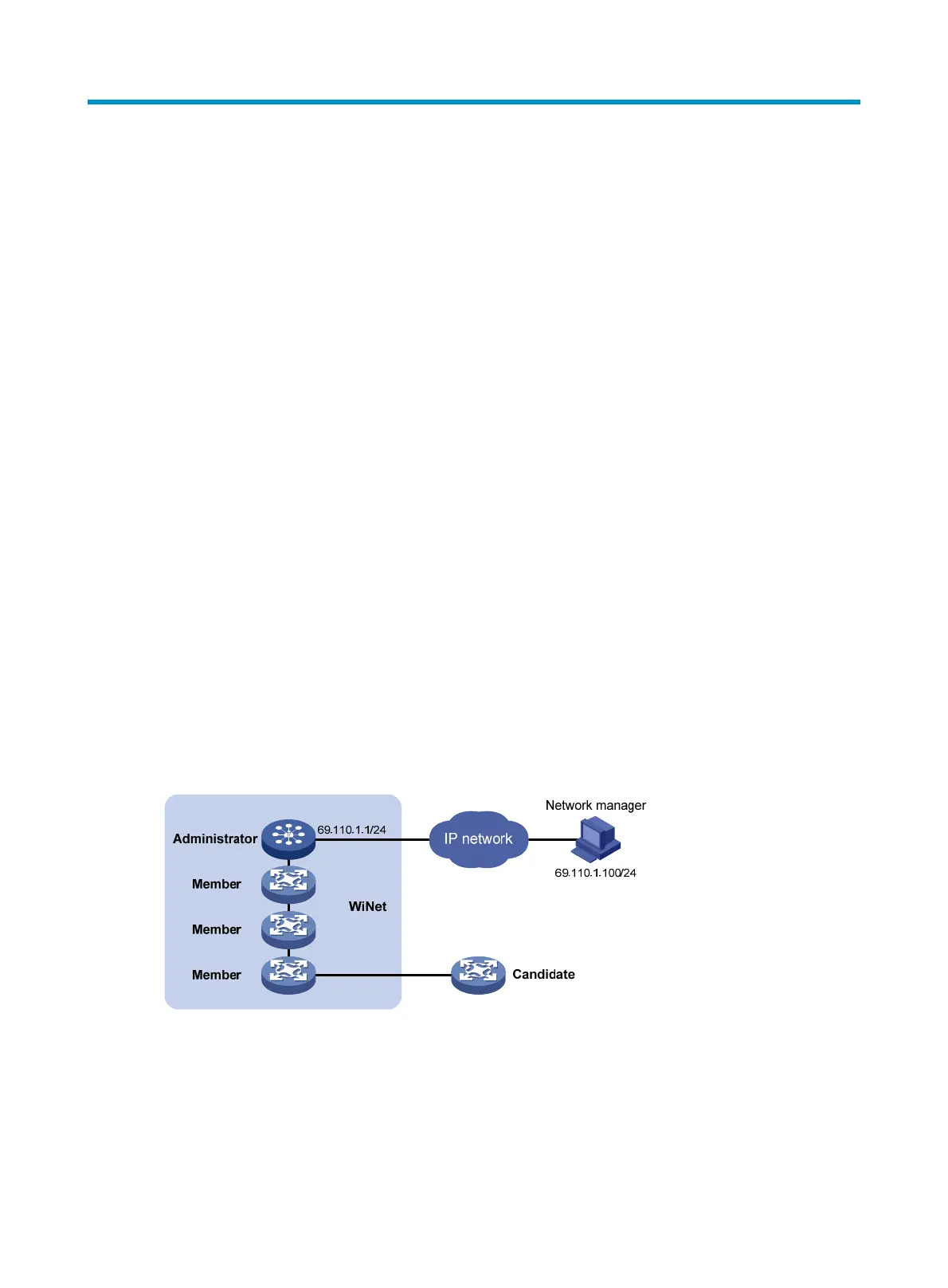507
Configuring WiNet
The Wisdom Network (WiNet) technology helps you centrally manage a large number of scattered
network devices by using a small number of public IP addresses.
WiNet has the following benefits:
• Integration—WiNet is integrated in network devices as a function without needing any dedicated
management device.
• Easy to deploy—To build a WiNet, you only need to select a management device to complete
network configurations.
• Low cost—No additional software is needed.
• User-friendly GUI—Facilitates operations and management.
• Plug-and-play—Displays a device in the network topology once it is connected to the network and
allows you to perform corresponding operations.
• Easy and quick deployment of security authentication—Allows you to configure a RADIUS server
on the administrator device through simple Web configuration and to configure interfaces of
member devices for security authentication through the administrator device.
Devices in a WiNet are classified into three roles.
• Administrator—Refers to the device serving as the WiNet management device. In a WiNet, only
the administrator is configured with a public IP address. You only need to specify one administrator
in each WiNet to configure, manage, and monitor other devices. The administrator collects
information to discover and add candidates.
• Member—Refers to a device managed by the administrator.
• Candidate—Refers to a WiNet-capable device that has not been added to the WiNet but its
topology information has been collected by the administrator.
Figure 531 Network diagram
Configuring WiNet
Enabling WiNet
To build a WiNet, configure a candidate as the administrator and configure WiNet on it.

